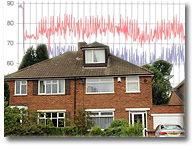Experiencing EMC interference?

My equipment is experiencing interference
Many amateurs are being impacted by various different sources of interference and consequently they request advice and assistance with diagnosing the cause of their problems. In a world filled with an ever-increasing number of electronic devices, the likelihood of interference to radio reception increases.
Every computer, switched mode power supply, mains powered LED lamp, light dimmer, electric motor etc. is a potential source of interference. The interference can take the form of blank carriers, signals with unidentifiable modulation, carriers rapidly sweeping across the band or just high noise levels. It may block out specific frequencies or whole bands. It may come and go at different times of the day, or be persistent throughout the day.
Finding the source of interference requires a methodical approach, working through nearby devices that could be the cause, searching possible locations from where the interference can emanate, and looking at the characteristics of the interference to help identify it.
One word of warning: increasingly it has been found that interference may be caused by a combination of different devices all contributing to the overall perceived interference. So, don’t necessarily look just for one source, but bear in mind the possibility that you may have to identify multiple low-level interfering sources.
Background Noise Levels
Even in a radio quiet location, atmospheric and thermal noise will be present in every receiver. At 10 – 15MHz the S meter should show a background noise level of around S-1 or S-2 (when measured in a 500Hz bandwidth). This noise level will gradually increase as the frequency decreases so that at 2MHz it is likely to be around the S-4 level. In many locations, the addition of man-made noise is likely to increase the perceived noise floor by perhaps a further 2 to 4 S-points. Anything above these levels may indicate the presence of undue interference and is worth investigating.
One common source of interference is VDSL broadband you can find advice on how to identify and report this to Ofcom through this link











